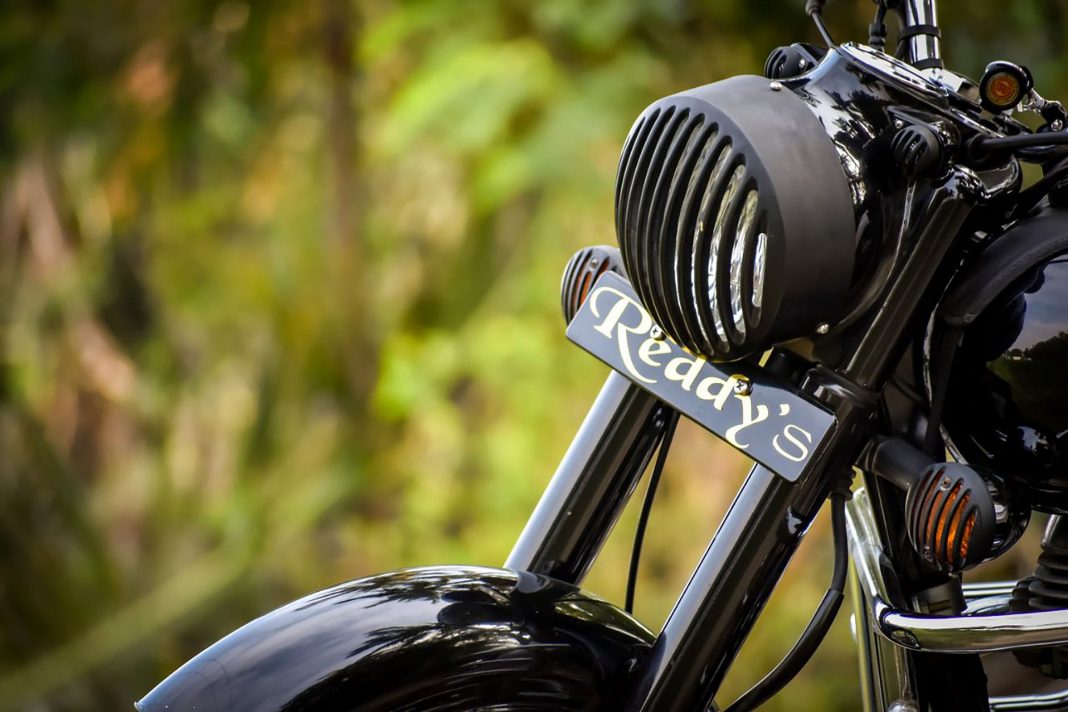| Issue #57 • May/June, 1999 |
A major failing of transportation worldwide is that 99.9% of vehicles on farms, street, and freeways work on one energy source: liquid fuels. In any disastersmall or large, local or global, short-term or long-termthis puts simple transportation at risk. Will your local gas station have a supply of fuel? Is there electricity to pump it from the tanks? Wouldn’t it be nice to own a vehicle that didn’t depend on gasoline, diesel fuel, or propane to operate? Actually, there is: the electric vehicle. It runs on the electricity from batteries. And, in the absence of utility power and standby generators, the batteries can be charged directly from the sun, wind, and water all around us.
 |
My own awakening to the benefits of electric vehicles (EV) began in the mid-1970s. I was building a research center and wanted it and my home to be self-reliant. I began the search for an alternative to my gasoline-powered car and truck. At first, I investigated alternative fuels. Methane (biogas). CNG (compressed natural gas). Alcohol. Hydrogen.
During this process I discovered an ugly truth about internal combustion engine (ICE) technology. The engine itself was a bottleneck, wasting
an average of 70-90% of the energy of any fuel it consumed as it did its work.
My research also revealed that, in 1900, steam cars and electric cars had dominated the roads. An electric-powered vehicle? I daydreamed about plugging a car into one of my wind-electric machines. A few months later, this dream came true with Ox, my first EV. I was driving on wind-watts! I had found an alternative to the ICE car and gasoline.
What is an EV?
An EV is a vehicle that has an electric motor instead of an engine and a battery pack instead of a fuel tank. How does it work? A battery pack, consisting of between 8 and 16 deep-cycle, lead-acid batteries, feeds electricity to a motor connected to the vehicle’s transmission. The accelerator pedal cable is attached to an electronic speed control, similar in size and function to a light-dimmer switch. This unit efficiently and quietly controls both the power and speed of the motor and the vehicle. Taking the foot off the accelerator permits the vehicle to coast. Or, if your controller has “regen,” the vehicle will slow down at the same time it reclaims some of the vehicle’s momentum as electricity, recharging the battery in the vehicle. This feature is important in hilly terrain.
Since 1972, I have converted and scratch built dozens of electric vehicles. Conversions are vehicles where the engine and related hardware fuel, cooling and exhaust systems are removed and replaced with an electric motor, batteries, and charger. Scratchbuilts are lightweight vehicles that are designed with EV propulsion systems. These and other EVs are described in detail in two books I’ve written on the subject.
EVs designed for the highway and freeway have battery packs that are generally too big to be recharged daily by modest renewable energy (RE) systems. There are exceptions. This article will focus on EVs that are useful for work and transportation that may be recharged from the sun, wind, and water of smaller RE systems.
The electric Ox
My first EV was a revived industrial electric vehicle that I transformed into a farm vehicle. It was simply a golf cart with a flatbed. Its 36-Volt battery pack was a close match for use with my farm’s 32-Volt, wind-generated electricity.
 Solar panels recharge an electric motorcycle miles from grid power. |
For seven years, Ox was our farm’s workhorse vehicle. It traversed every kind of terrain. Its 1.5 horsepower series motor would kick in the torque to tackle the steepest grade or the softest ground. The heavy duty FNR (forward-neutral-reverse) switch and the accelerator pedal were the only operator controls. No meters or other instrumentation were ever installed. The original six-position series-resistance (non-electronic) controller proved adequate for our needs.
The greatest discovery with Ox was that an EV is also a portable power station. Accordingly, I rigged up a receptacle box on Ox’s side. Wherever I went, I could plug in a variety of 32V toolsa drill, cutoff saw, welder, etc. Eventually, an inverter added 110Vac capability to the mix. I spent whole afternoons typing away out in a meadow with Ox parked silently nearby, supplying the power for the electric typewriter. I wrote big pieces of several of my books out there. When I sold my farm, Ox stayed to give the same service to the new owner.
My fondest memory of my 10-year adventure in farm living outside of Mariposa, California is the way that Ox and my windmachines complemented the silence of the land that surrounded our home.
Virtually any golf car or cart is a good starting point for a vehicle of this type. These are quickly abandoned by golf courses or industry when cosmetically damaged or beyond a certain service life. Good sleuthing or “wanted” ads will help ferret them out. Inspect the vehicle’s motor and gearbox first. Next, check out the controller, and steering and brake systems. At least, they should have all the parts! Tires are replaceable, but expensive and a hassle. If it’s been sitting for a while, figure that the vehicle’s batteries are scrap. Your first offer should be to remove it for the labor of hauling away garbage. If you can’t get it for less than $50 bucks, continue looking. If it’s not operable, you’re the one who’s taking the risk.
An electric Mule
One of the slickest EV conversions I’ve seen involved an ATV (all terrain vehicle) on a 67-acre organic farm outside of Hilo, on the big island of Hawaii. Harry MacDonald wanted a work vehicle that would haul compost, deliver machinery for maintenance without breaking up the fragile turf, and emit no exhaust. To this end, Harry engaged Tom Carpenter to convert a 2WD Kawasaki 500 Mule to electric propulsion.
The Mule’s steady work is hauling compost around the farm on dirt and gravel roads and slick turf. It also routinely transports mowers and weedwackers to work areas. Tom re-rigged the Mule’s system to power tools at remote sites directly (with an inverter), avoiding the use of an engine-generator. The silent ac power was an instant success. Remarkably, the 6-Amp charge rate from solar panels installed on the Mule’s roll bar kept the battery pack topped off despite the constant drain of power tools through the workday. Drivers got into the habit of always parking the Mule in the sun. While the farm has several solar stations of larger size, Tom realized after four months of continuous operation that the Mule had never been plugged into even one of the solar stations!
The Mule’s performance was also a surprise. In a trial run, Tom went 35 miles at an average speed of 13.8 mph, with the top speed (downhill) reaching 27 mph. Adding two more batteries (bringing the pack up to 48VDC) brought the Mule’s average speed up to 17 mph for the same distance of 35 miles.
ATV’s like the Mule are useful around the farm or homestead for transportation or hauling materials, produce, and compost. Since the cost of repairing or replacing the engine and drivetrain (damaged or destroyed through abuse) is prohibitive, many ATVs go into an early retirement. This is a boon for anyone who would like to convert one to electric propulsion. (Carefully inspect any such find. Damage to the suspension, steering, or chassis can also be expensive.)
There are three problems with ATVs: limited space, a high CG (center of gravity), and a short wheelbase. If the batteries can be mounted low, the vehicle’s CG will prove more stable.
Electric-assist bike
The bicycle is the most efficient machine ever developed for transporting people about. I had been working with EVs for more than 15 years before I witnessed a human-powered vehicle (HPV) competition. This and the Gossamer series of human-powered aircraft awaken me to the true power and potential of HPVs combined with electric propulsion. Understandably, I had dismissed bicycle technology as being too light to carry much in the way of batteries. No one came up to me and said, “So what?”
In bike circles, a favorite discussion is the “accumulator.” Bicyclists hate to stop at intersections because braking a bicycle throws away the energy of momentum gained from leg muscles and rudely dissipated as heat in the brakes. The accumulator, then, is a technique of storing the bicycle’s momentum and using it for takeoff.
What if the accumulator is a battery pack? A small electric motor can be added to a bicycle to assist the pedal effort. Even the simplest circuitry (no electronic controller) with a PM (permanent magnet) motor will produce regenerative braking if desired. The ZAPa popular kit for adding a motor and battery pack to a bicycleuses precisely this technique. The battery pack acts like an accumulator. The motor reclaims 30-50% of the momentum of bicycle and rider by converting it into electricity, routing it to the battery.
In the electric-assist bicycle (EAB), the electric motor is small and the human effort still reigns supreme. The EAB’s operator, then, gets help with acceleration, cruising, hillclimbing, and braking. Any attempt to operate the EAB without pedal effort will quickly drain the small battery pack. My own experience suggests that many bicyclists will find a well-designed EAB a pleasure to operate.
 Wind-generated electricity was used to recharge Ox. |
The basic EAB is composed of a small PM (permanent magnet) motor, a 12-24V battery pack, a fixed-ratio drivetrain, and a control unit. It includes mounting brackets and hardware, a wiring harness, and a battery charger. Installed, the electric-assist option could add 12-22 pounds to the bicycle’s weight. The amount of battery capacity (short vs long range) accounts for the weight variance. Watch out! A combined motor and battery weight greater than 25 pounds seems to severely compromise pedal-only input and dictate the addition of better suspension. Circuits for regenerative and dynamic braking should be added to help brake the additional weight. Electronic motor control is generally not recommended for an EAB. Commercial units are expensive ($175-225) and do NOT include regenerative braking.
Since the drivetrain is a fixed ratio in the EAB, the motor must be “geared” for the desired operational speed. Ask yourself, “How fast do I want to go?” When geared for high-end work, the EAB will accelerate slowly and gobble power on startup if there is no significant pedal input. It is generally better to design for low-end work, such as hill-climbing. This will also make for better “braking” in downhill grades.
Many designs exist to transfer the motor power into bicycle propulsion. Hub, tire drive, rim-pulley, and spoke-pulley are examples. None of these designs interact directly with the bicycle’s stock chainworks (pedal, chain, sprocket, and idler system).
There are several reasons why it is not a good idea to mix electric propulsion with the existing chainworks. First, most bicycles use a “free-wheeling” rear wheel. This allows power to flow only one way: from the pedals to the wheel to the road. A ratchet inside the hub between the axle and the wheel performs this job, engaging in one direction, but slipping in the other. When you stop pedaling, the pedals and chainworks stop, while the wheels keep on turning.
Free-wheeling has the obvious benefit of maintaining efficiency. More importantly, however, it keeps the road and wheel from powering the chainworks. If the road and wheel could power the pedals through the chainworks, the pedals would never stop rotating while the bike was in motion. At high speeds, this could be nasty. Integrating the electric motor into the existing chainworks would partially defeat this feature, allowing both the wheel and the pedals to be powered by electric drive.
There’s a second problem when the motor drive is interfaced with the existing chainworks the finished system loses the ability to employ regenerative or dynamic braking. Since a free-wheeling rear wheel will not “power the pedals,” it also will not transfer momentum into the motor via the chain! Ergo, no regenerative or dynamic braking.
The preferred methods of motor connectiontire drive or a separate pulley driveoperate independently of the bicycle’s freewheeling hub. Each transfers power directly to the tire or the wheel on the “pavement side” of the wheel axle. Thus, they work in parallel with (but independent of) the stock chainworks, while powering the vehicle or recovering power during braking.
You may want to retain the option of quickly converting your electric runabout back into a standard bicycle. Motor mounts, battery holders, and all wiring are best installed permanently. Quick-release bolts or fasteners should ease the removal of motor, battery pack, and controller when non-electric operation is desired, or to prevent theft. If these fasteners are padlocks, you’ve now got a security system.
There is an optimum weight for the electric-assist bicycle. Twenty-five (25) pounds seems to be the upper limit of hardwaremotor, battery pack, controller, and wiring. Above this amount, pedal-only operation is difficult and additional suspension is required.
Allow 3 lbs of motor and 2 lbs of controller for the EAB. Limit the battery pack to 15-20 lbs. A 12-Volt, 25-Ah NiCd or NMH (Nickel-Metal-Hydride) battery pack will weigh approximately 18 lbs.
 Four 12V sealed lead-acid batteries just fit under the tank in the Shawk. |
In California, a motor-driven bicycle is easy to register (license) and requires no insurance. A helmet may not be required for an EAB, but its operator should wear one.
Single-gear and 3-speed bicycles typically make poor EABs. Ten-speed mountain bicycles seem to be the norm. This isn’t a hard and fast rule; just an observation. Lots of gear choices help the rider “match” the motor’s effort, particularly during hillclimbing.
Shawk
A good example of a straight conversion of a motorcycle to electric propulsion is the Shawk. Designed and built by Ely Schless, the Shawk started life as a Honda Hawk. Ely brought his experience as a racing motorcycle mechanic and competent machinist to the project. It was needed. In the space normally occupied by the engine, transmission, gas tank, and exhaust pipes, Ely cleverly adapted the small space to hold four (4) batteries, the motor, and controller.
With virtually no background experience in EVs, Ely got it all right the first time. The novice EV designer might think the Shawk’s system undersized with a 4½ HP motor and only 48 Volts of battery pack. However, the motor is a series type, ensuring high torque at zero RPM. It’s enough to move 550 pounds of bike and rider off the line with gusto. The PMC controller will channel 350 Amps to the motor if the batteries are able to deliver it. At 35Ah, the pack is light on energy density (duration) but easily delivers the high current (power density) to meet the motor demands. If you do the math, this combination of motor, controller, and drivetrain is able to deliver as much torque as an 18 HP engine.
Ely was test driving the Shawk when I first met him. Several months later, I test drove the Shawk for myself. It felt perfectly natural to get on, turn on the key, and power it into the street. When fully charged, the batteries will let you chirp the tires. Acceleration is briskall the way up to its 40 mph cruise speed. More modest acceleration will ensure a range of 15 miles.
The single-ratio, gearbelt drive of the Shawk strips the motorcycle of its intimidation to the novice. In addition to the lack of vibration and engine sound, there are no gears to shift and no clutch to operate. The motor cannot be stalled. Even at speed, sounds from the environment can be heard through the helmet, a feature I found particularly endearing. The Shawk leaves a silent wake.
I was able to borrow the Shawk while I was doing the layout for my last EV book in a remote area of Oregon. I rode it daily to explore the back country. It was recharged from two solar modules.
Do-it-yourself’ers with the confidence to tackle the conversion of a motorcycle to electric propulsion should check out motorcycle wrecking yards in larger towns and cities for candidate vehicles. Or run an ad, offering a sum (25 bucks? 50 bucks?) for that dusty motorcycle stashed away in a garage somewhere. Some parent may want an old project motorcycle to quietly disappear. Be discriminating. You don’t want to do a restoration. Also, as with an ATV, there’s limited space in a motorcycle frame for batteries and motor. A small motorcycle using a 1 HP PM motor ($200) and controller ($200) will only need two 12V, deep-cycle batteries to make a good road or off-road machine.
Electric speedster
In the hope of building a competitive entry in the solar car races in 1990, Michael Leeds of Santa Cruz, California built a three-wheel test mule using off-the-shelf and affordable components and lead-acid batteries.
The Speedster is an excellent example of the benefit of thinking light. With only six 12V batteries (72V of battery pack), a 4.5 HP series motor, and a single-ratio rear drive, the 600-lb speedster is “brisk” from a standstill and quickly reaches a 50 mph top speed. With the help of Dick Rahders, the vehicle created a new class of highway-legal EV in California, too.
The Speedster was a great demonstrator and a delight to experience, but it lacked room for a passenger. To let someone experience it, then, meant letting them drive it. The Speedster’s quiet elegance disguised its powerful acceleration, as many a novice discovered. Also, with its frame and suspension designed for solar racing, the Speedster was quickly becoming “thrashed” with street use and the antics of a large number of inexperienced drivers. The vehicle was fun, but it was clearly dangerous to use on the street. While the overall ergonometry of the vehicle was intuitive, it bump-steered (took another line when it hit a bump) because the steering system was worn. The Speedster lacked reverse (gear), real suspension and stable mirrors, and had no rollbar. Clearly, a major overhaul would be needed.
With these conditions in mind, I put together a project proposal to transform the Speedster for a new mission in life: safe for the street and able to carry a passenger. The proposal was accepted and, over the course of several months, the Speedster II evolved.
I had these observations and made these changes:
Rear Wheel Assembly:The moped rear wheel assembly was too small for a vehicle this fast and heavy.
Frequent tire blowouts, a noticeable lean in turns, and the easy burn outs from a standstill suggested that something stronger was needed. I adapted a larger, huskier wheel/tire/rim from an Auranthetic motorcycle. The wider wheel could be run at lower tire pressure, softening up the otherwise unsuspended rear end. Also, the smaller overall diameter of the wheel decreased the drive ratio, too, minimizing the tire-spinning.
Front Suspension:The parallel A-arms (front wheel support) were designed for that of a solar racer, and too small for street use. The vehicle “bump-steered.” Increasing wheel castor eliminated some of this.
Nevertheless, front wheel alignment constantly changed with use as the undersized components bent and flexed. (Replacement of these components was not funded.) I installed larger front spring-shocks. The old ones were almost fully compressed for drivers weighing over 150 lbs. This relieved some of the stress on the lighter suspension components.
Rear seat:A rear seat was installed, providing a means to give rides to children and adults in an educational setting. The seatback was designed to pivot forward and lay flat against the seat bottom. This gave access to the battery charger and charging extension cord. It also improved the aerodynamics when no passenger was aboard and increased the cargo-carrying ability.
Battery Pack:The original 24C3 batteries were worn out. These were replaced with more robust 27TMH Trojan batteries and divided into two saddle packs. Mounted on (and secured to) extensions off the frame on either side, this arrangement created the rear passenger space. A plastic cover, removable for maintenance, was installed over each pack to keep curious fingers away from battery terminals.
Steering Support: The upper support for the vehicle’s steering postweakened and sloppy from the loads imposed on itwas replaced with a new one and structurally reinforced. A lock was installed on the lower steering support to keep the arm from popping out (as it did occasionally, turning a casual cruise into a steering adventure!).
Control panel:A control panel was built and positioned for better driver visibility and reach. Switches like run, horn, headlights, and turnsignals, originally mounted in the steering post upper support, were re-mounted on an aluminum panel. A reversing switch was added, all switches got labels, and indicator lights were added for nighttime operation.
Emergency brake:An emergency brake, adapted from a 280ZX, was installed and connected to the rear wheel brake assembly.
Roll bar:A roll bar, fashioned from 2-inch muffler tubing, was added to the vehicle. (Ugh. Stronger tubing is called for.)
Reversing circuit:An electrical reverse “gear” was added. I took a low-budget approach, using four 12V starter contactors, to reverse the field winding relative to the armature winding. This is essentially a double-pole, double-throw operation. (Another mistake. This was more time-consuming, and less safe and reliable, than if I had just budgeted for the $175 to purchase and install a true reversing contactor.)
Miscellaneous:The vehicle was rewired, and many components re-located. I recessed and shock-mounted the headlight assembly to avoid the frequent damage it had sustained when the vehicle front end would tap something. The turn signals and brake light were made operational. I installed motorcycle tires on the front end. The front seat was redesigned for better ingress/egress and better back support. The charger was installed onboard. The hydraulic brake cylinder was overhauled and the disc brakes adjusted.
Wiring Diagram: Once I completed the vehicle rewiring, I drew up a complete wiring diagram for the vehicle from my sketches. I also drafted a system schematic. These would aid mechanics or electricians in future troubleshooting and repair.
Operations manual:I also put together an Operator’s Manual for the Speedster, listing location and function of all vehicle components. Besides helping the novice operator understand vehicle features, this manual is a good place to give appropriate warnings about the limits of vehicle operations.
Register, License, Insure:The Speedster is street and highway legal. Because it is a three-wheeler, it falls into the general classification of a motorcycle. (It is in a new class that is bigger than a motorized bicycle.) Like any motorcycle, it is expensive to have comprehensive or collision coverage, unless a high deductible is taken. A relatively inexpensive insurance rate provides good liability coverage.
Helmet:The motorcycle classification means wearing a helmet. The roll bar and seat belt offset the need for a helmet butthe law is the law. Without engine noise, it is easier to hear other traffic even with a helmet.
Overall, the Speedster is a good draft of a street machine. However, the existing vehicle design was too lightweight in its basic construction to consider further improvement without major design changes. What’s the next evolutionary step? A scratchbuilt street machine (see sidebar). I estimate that a stronger vehicle would cost $5K in parts and $6K in labor (150 hours at $40/hr) to construct.
| THE ELECTRIC OX |
I found the original chassis for Ox, an industrial vehicle, abandoned in a Goodwill resale yard in Orange County, California, in 1972. It looked awful. A closer inspection revealed good tires, a 1-1/2 HP series motor and gearbox, and a solid frame. It had six 6V deep cycle batteries below the flatbed. I bought it, coaxed it up into a flatbed truck, and drove it home. I tried for a month to revitalize the batteries (understanding very little about sulfation at that point). They gassed so badly during charge that eventually a spark blew one of them up and I traded them in for a new set. While I was undecided about what I wanted to do with this vehicle, its ungainly front end wasn’t part of any scheme. I set about with a torch to cut it off. Once done, I was surprised at how much weight I had just shaved off the vehicle. Suddenly, I had a very spry electric! I had fantasized great things for this EV. In the end, the reality of what I did have soaked in. Instead of adapting it to be a street machine, I worked within its constraints to build something for use around the farm. I bolted in a new front seat and rigged up a tiller for steering. I welded together a front assembly to protect the passenger and driver, and the steering, brake and accelerator linkages. I named it Ox. Ox plugged directly into our windmachine(s) whenever it was not in use. This helped it maintain a high state-of-charge. A monthly water and hydrometer check, equalizing charge, and battery washdown was the only care it got. It was a happy feeling to drive around the farm on wind-watts. Eventually, I restored an old 220-watt vibrator-type inverter for use in Ox. It supplied 110Vac (60-cycle) directly from Ox’s 36V battery bank for soldering irons, power tools, and even my typewriter. |
| AN ELECTRIC MULE | |
In the first step of converting a Kawasaki 2WD Mule to electric propulsion, Tom Carpenter removed the engine, transmission, and engine-related components. A 3/8-inch aluminum motor mount was welded together and bolted to the original engine mounting holes. A 6HP Advanced DC series motor was coupled to the locking differential (internal 6:1 ratio) with a 1:1 ratio of timing belt pulleys. The potbox for the Curtis 1205-201 controller (36-48V, 350A) was connected through the existing throttle cable to the footpedal. Forward and reverse are handled through the stock (mechanical) linkage. A DC contactor was selected for keyswitch operation, and a DC-DC converter handles 12VDC (aux) loads. A dual main circuit breaker was added to isolate the battery pack from the vehicle for servicing. With a wet climate in mind, Tom installed the controller, contactor, pot box, meter shunts, and a 12VDC fuse strip inside a plastic Carlon box. An outdoor timer box, mounted under the front seat, housed the circuit breaker near the driver.There was room for six batteries in the Mule, five in the rear and one under the single front seat. Would the batteries be 6V or 12V? Since the vehicle was intended for farm work, rather than recreational or street use, Tom opted for 6V batteries, for a pack voltage of 36V. The potbox for the Curtis 1205-201 controller (36-48V, 350A) was connected through the existing throttle cable to the footpedal. Forward and reverse are handled through the stock (mechanical) linkage. A DC contactor was selected for keyswitch operation, and a DC-DC converter handles 12VDC (aux) loads. A dual main circuit breaker was added to isolate the battery pack from the vehicle for servicing. With a wet climate in mind, Tom installed the controller, contactor, pot box, meter shunts, and a 12VDC fuse strip inside a plastic Carlon box. An outdoor timer box, mounted under the front seat, housed the circuit breaker near the driver.There was room for six batteries in the Mule, five in the rear and one under the single front seat. Would the batteries be 6V or 12V? Since the vehicle was intended for farm work, rather than recreational or street use, Tom opted for 6V batteries, for a pack voltage of 36V.
Sealed, absorbed-glass matte, deep-cycle batteries were selected for the Mule. Used in wheelchairs and other motive power applications, the Concorde 6V batteries weigh 68 lbs each, are rated at 180Ah (20-hour rate), and use lug terminals. To support the five batteries, Tom fashioned an aluminum frame from 1-¼ inch aluminum angle and popriveted it together. The sixth battery of the pack is mounted on the metal floor just under the front seat. Far from utility lines, the Mule is charged by solar power. Initially, it was designed to recharge from several solar “stations” sited throughout the land. Each station is composed of a dual-axis solar array (15 Solec S100s), a battery pack (24VDC, 1,400Ah capacity), and an inverter (Trace 4024 sine-wave 4kW, 120Vac). A K&W charger (120Vac input, 24VDC output) was purchased to recharge the Mule’s batteries.
A subsequent expansion of the Mule’s role revealed an alternate charging system. A new building was planned. Normally, the Mule would lug a 5000-watt generator to a worksite when power tools were needed. Instead, Tom tried out an idea, rigging the Mule as the power source. He attached a quick-release plug to a Trace inverter (36VDC input, 120Vac output) to tie into the battery pack. Since the Mule would be sitting all day at the building site, Tom also installed three 100-watt Solec panels on the Mule’s roll bar assembly. A Heliotrope CC20 charge controller was added to protect the batteries from overcharge. The silent ac power was an instant success, with the meager solar input keeping pace with the intermittent high-power consumption from tools. At any time, the Mule’s driver can scan the dashboard- mounted ammeter and voltmeter to check battery condition. A cycle computer (VELO) was added to watch vehicle speed, distance, and time. It also recorded the maximum speed and accumulated distance. The magnetic sensor was glued to the left rear wheel, the magnetic pickup was secured to a brake line, and the computer was calibrated to the tire’s circumference. |
| ELECTRIC-ASSIST BICYCLE |
| The ZAP (zero air pollution) kit is available for people who wish to purchase an electric-assist option for their bicycle (see Sources). Do-it-yourselfer’s with metal and tool working skills can build their own. Components for an electric-assist bicycle (EAB) will have these general specifications.
Motor: 12Vdc, PM (permanent magnet), 2700-3500 rpm, demag current max greater than 20-25 Amps, 3-4 lbs weight. Mounts to frame behind and below seat. Controller: A high-current DPDT relay, slaved to a 2-position toggle switch, selects 12V (slow) or 24V (fast) to the motor by configuring the battery pack into paralleled (12V) or series (24V) wiring. Downhill regen braking works in 12V position. A GO (push) button connects pack to motor, and is released during slow-fast selection. The addition of a switch, microswitch, and additional relays adds two dynamic braking rates (resistor and short). Battery Pack: Two 12V batteries (lead-acid, nickel-cadmium, or nickel-metal hydride) make up the battery pack. At 10-15Ah each, the pack will weight 10-20 pounds. Drivetrain: V-belt, cogbelt, or chain. At 25 mph, a 26-inch wheel is turning at 325 rpm. The stock spoke-pulley is 14 inches in diameter. With a 1.5-2 inch pulley on the motor, a 7-9 to one ratio will result. An 8-12 tooth cog on the motor and an 80-120 tooth gearbelt rim pulley will also complete the EAB drivetrain. Additional components include the wiring harness, fuses, molex connectors (aid in motor and battery removal), battery charger connector, circuit breaker (rated to protect the motor from demag currents), and a Voltmeter (a simple multimeter will suffice). What does it cost? Motor: surplus, $15-25. Battery: 17 Ah ($62) or 33 Ah ($71); purchase batteries locally to save shipping costs. Relay: DPDT, 50-amp rated ($25); avoid using solenoids with high-current coils. Molex connector set: $10. Misc switches, wires: $10. Spoke-wheel pulley: no current source. |
| THE SHAWK | |
The idea to build an electric motorcycle came to Ely Schless in the middle of an engine rebuild for his primary racing bike, a 650 cc, 1988 Honda Hawk. The engine needed $1,500 worth of work. Ely had already lightened the motorcycle for racing, stripping 100 pounds from the original 400 pound curb weight. Suddenly, he wanted a “non-oil” entity. I wanted an electric. Ely affixed a matching “S” in front of the HAWK to originate the catchy name for his conversion. He custom-fit the 6 HP series motor, sealed lead-acid batteries, and the electronic controller into the Hawk frame, drivetrain, and throttle controls. The result was a user-friendly machine. People who have never driven a motorcycle seem willing to try the Shawk. Remember, there’s no noise, no smell, no clutch, and no possibility of “stalling” the engine. Everyone gets it right the first time. What did the Shawk cost Ely Schless? $140 each for 4 chargers, $120 each for 4 batteries, $450 for the motor, and $500 for the controller. Ely works his own well-equipped machine shop, so everything needed for this conversion cost him only the materials. |
| A STREET MACHINE |
| Based on my experiences with lightweight EVs, I have the following recommendations for a high-performance, long-range street machine.Design for a 1300-lb running weight (includes 175-lb driver. Add passenger weight). Use a 120V pack. For example, using the 27TMH series, the 10 batteries will weigh 720 lbs. This leaves a body and frame weight of 405 lbs to stay within design limits.
Fit an all-weather, aerodynamic shell. Sketch it in some detail. All components will need to fit inside. The canopy-roof should remove for touring. Integrate a roll-bar into the rear bulkhead support. A high-threshold door for ingress and egress on one side will give a sporty access but maintain overall, lightweight structural support. Position the driver and passenger in tandem-offset seating above the battery pack. This ensures good visibility for the driver. The high profile helps other people see this vehicle, too. This design positions the battery weight low, center, and forward for stability. This “stacked” arrangement minimizes vehicle width and length. Consider an exchangeable battery pack. The pack can be split into two identical, 360-lb “modules” of 60V each. These may be saddlepacks or extend, side by side, across the width of the vehicle. A community service center can be built to maintain the packs, leasing them (yearly) to owners for home charging, and exchanging the packs when extended range of the vehicles. A 10 HP series motor and electronic controller would make up the propulsion package. A 4:1 (fixed) gearbelt drive will power the vehicle to 60 mph, but ensure good low-end performance. Electric reverse and regen braking should be included. The vehicle can be arranged as a standard 4-wheeled EV or as a motorbike (3-wheels). In the 4-wheeled configuration, the FRW (front-to-rear weight) ratio is 1:1, with the rear wheels driven through a simple lawnmower (seated type) differential. In the 3-wheeled layout, the two front wheels are both steered and powered. Maintain a FRW (front-to-rear) ratio of 4:1 for good stability. With this low a vehicle weight, the rear wheel supports too little weight for good traction during acceleration or regen braking, hence the preference for front-wheel drive. |
| SOURCES |
| Michael Hackleman, PO Box 327, Willits, CA 95490. Send SASE for publications list.The New Electric Vehicles: A Clean and Quiet Revolution, Michael Hackleman, Home Power Publishing, 272 pages, $25. Available from address above. The vehicles in this article are partial excerpts from this book.
Burden’s Surplus Center, 1000 W. “O” St., Lincoln, NB 68501. This is the old standby catalog if you want anything mechanical, hydraulic, electrical, and electronic. Switches, motors, generators, meters, relays, contactors, wire, vehicle accessories, pumps, blowers, lights, indicators, etc. Good prices. Just make certain you understand all the parameters for the devices listed. C & H Sales Co., P.O. Box 5356, Pasadena, CA 91107-0356. This is a surplus catalog with particularly good deals on motors, NiCad batteries, miscellaneous meters, switches, lights, and blowers. Comet Industries, 358 NW “F” St., Richmond, IN 47374. Source for a lightweight (7 lb) differential that will handle up to 20HP, for under $50. |



 A gearbelt delivers motor power to the stock transmission, eliminating the less eifficient infinite ratio drive unit.
A gearbelt delivers motor power to the stock transmission, eliminating the less eifficient infinite ratio drive unit.













